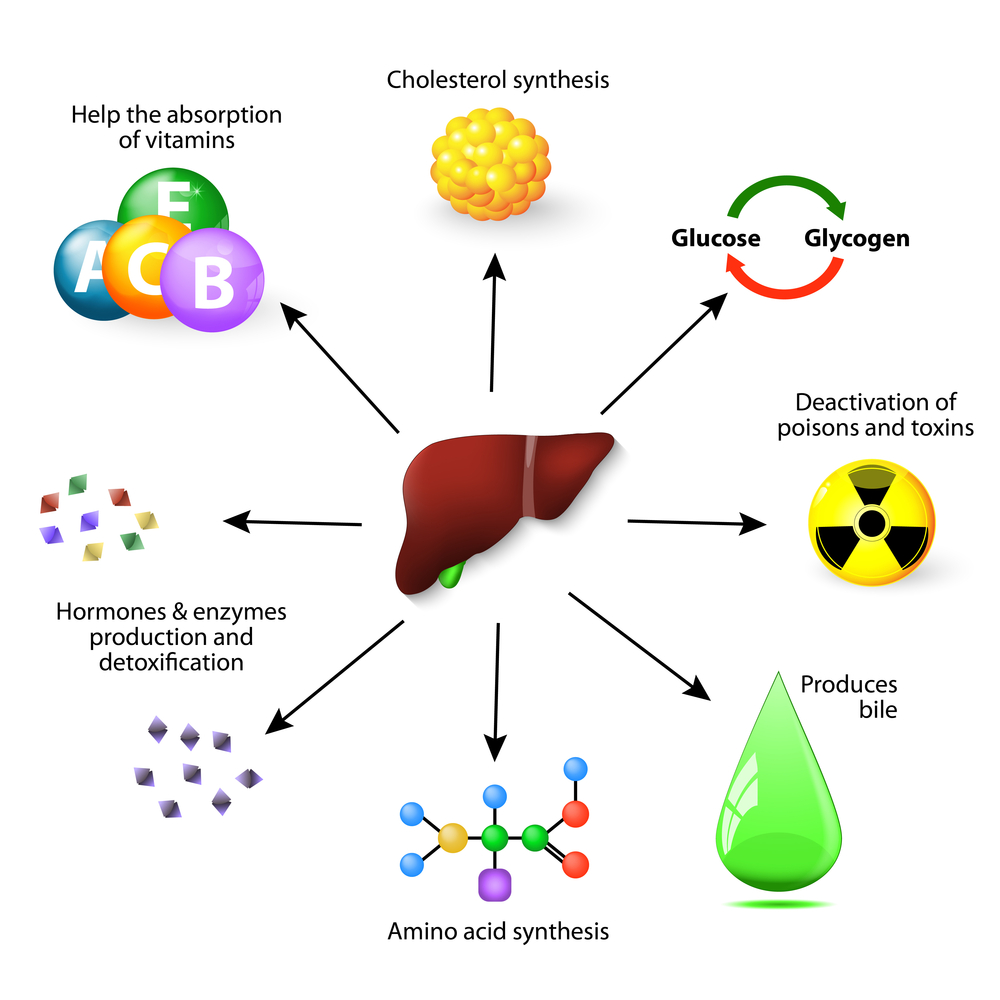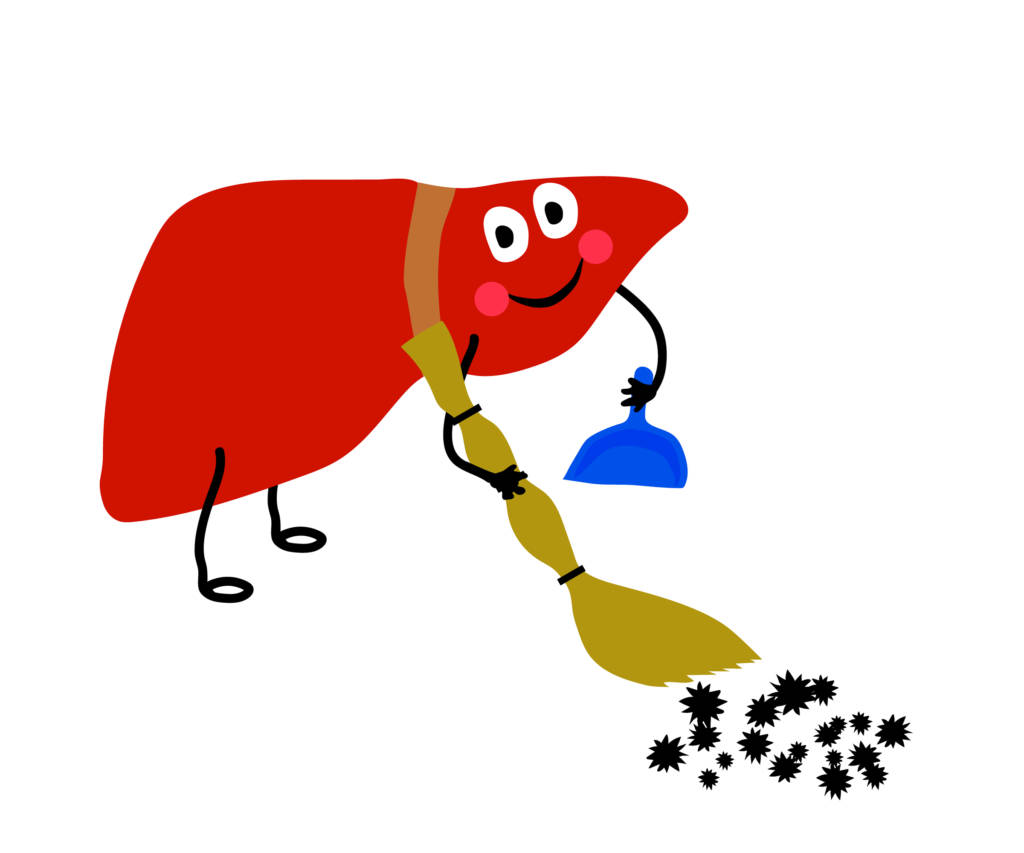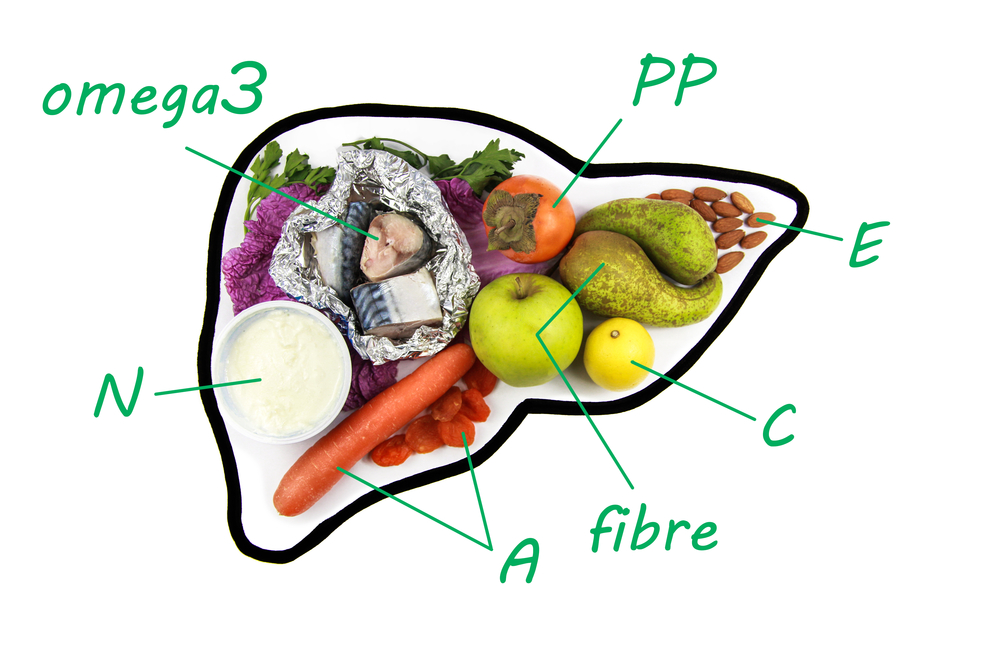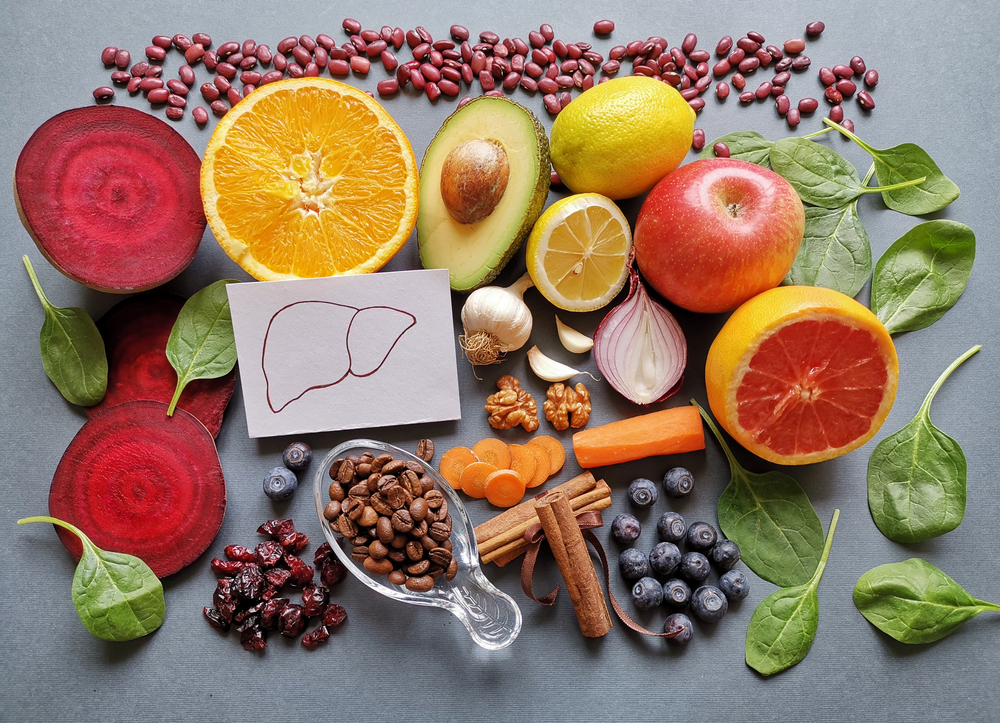Happy New Year! This is usually the time of the year when we start thinking of making a few heath changes. A little like a body spring clean. So I thought it best to write a post on the Liver. Why? Your liver is the hardest working organ in your body with 500+ functions.
Below are just a few examples:
Detoxification – The liver processes any toxins that end up in the body; that includes those from external sources such as alcohol, smoking or even pesticides on food and also those created inside the body, such as toxins produced by harmful bacteria or even by-products created during the processing of hormones such as oestrogen.
Bile production – The liver produces a mind-blowing 800 – 1000ml bile every single day and this has a hugely important job. Bile helps the body to digest and absorb fats, cholesterol and some vitamins too.
Blood clotting – With the help of vitamin K, the liver produces proteins that are needed for blood clotting. It also breaks down old or damaged blood cells.
Cholesterol production – Many people are completely unaware that the liver actually makes large amounts of cholesterol!
Protein metabolism –The liver is also involved in what happens to proteins inside the body. Amino acids can be changed so they can be used to make energy, carbohydrates or even fats and it’s the liver that’s responsible for doing this. The liver also makes non-essential amino acids and converts ammonia (a toxic by-product of protein metabolism) to a much less toxic substance called urea which is released into the blood, transported to the kidneys and passed out of the body via urine.
Fat metabolism – the Liver helps to make energy from fats. Ketones are waste products produced when the liver breaks down fats to make energy and can be toxic in large quantities.
Carbohydrate metabolism – The liver helps the body to maintain a constant level of sugar in your blood for easy-to-access energy. When blood sugar gets too high the liver removes some from the blood and stores it as glycogen. If blood sugar gets too low, the liver breaks down glycogen to release sugar into the blood. Once liver glycogen stores are full, excess glucose is converted into fatty acids by the liver for long-term storage as fat.
Iron & copper storage – Iron is taken from haemoglobin and stored in the liver as ferritin, ready to make new red blood cells. The liver also stores copper and releases it when needed.

Vitamin storage – The liver stores significant amounts of vitamins A, D, E, K and B12.
Immune function – The liver contains high numbers of active immune cells called Kupffer cells; these cells destroy any pathogens that might enter the liver via the gut.
Albumin production – The liver produces albumin – a substance which helps to maintain blood pressure and stops the blood vessels from becoming leaky.
Blood pressure regulation – The liver also makes a hormone called angiotensinogen, which also helps to regulate blood pressure.
With all these different types of functions as a Nutritional Therapist I thought it apt to focus on the function of detoxification. For your liver to function effectively it relies on several essential nutrients, amino acids, antioxidants, vitamins and minerals. Genetics and lifestyle also determine the rate at which the liver processes toxins. Important to note that if the process is put under pressure (by exposure to too many toxins) the system becomes unbalanced and the liver will be unable to effectively eliminate the toxins.

This may lead to symptoms of toxic overload, which may include:
→ Brain Fog
→ Low mood
→ Headaches
→ Skin rashes
→ Aches and pains
→ New allergies and sensitivities
→ Memory and concentration problems
How do toxins arrive in the body?
Toxins come from many different places; from air, food, water, around you in your environment and some are even made inside your own body – toxins are everywhere! The liver first has to transform the toxins into different forms that can be safely eliminated from the body.
Once the toxins have arrived in your body, the liver has the job of transforming them into a different form. This happens in a two-phase process. The first phase actually transforms the toxins into a slightly more harmful compound. Vitamin B3 (niacin) is an important nutrient for this step. Whilst also antioxidants rich foods can help to protect the body from damage at this stage. Brightly coloured fruits and vegetables are also packed full of antioxidants.
The second phase is absolutely crucial as this is the part where the toxins are made safe. In phase II, the liver joins the toxin onto another molecule, which makes it safe enough to eliminate from the body. The liver needs a vast amount of ingredients for phase II to work quickly and efficiently. These include antioxidants, amino acids (from protein foods) such as methionine and cysteine, B vitamins, folic acid (5-MTHF (5-methyl-tetrahydrofolate)), choline, magnesium, vitamins C & E, zinc, selenium and copper. Whilst also needing lots and lots energy, so sleep, eating the right foods and rest is important.

Toxins are flushed out of your system via your breath, sweat, urine or faeces. That’s why it’s crucial to make sure you have healthy bowel movements daily, breathe deeply, exercise (sweat) and drink plenty of water.
Thank you for reading. Please do not make changes to the way you eat or take food supplements (especially f on medication) without seeking help from a trained health care professional.
Fiona Waring
Dip Nut, BSc.(Hons), MSc PHN, ANutr
Nutritional Therapist
M: +44 07957 267 964
eatyourgreens@fionawaring.com
‘Registered with the Association for Nutrition – www.associationfornutrition.org
Protecting the public and promoting high standards in evidence-based science and professional practice of nutrition.’
